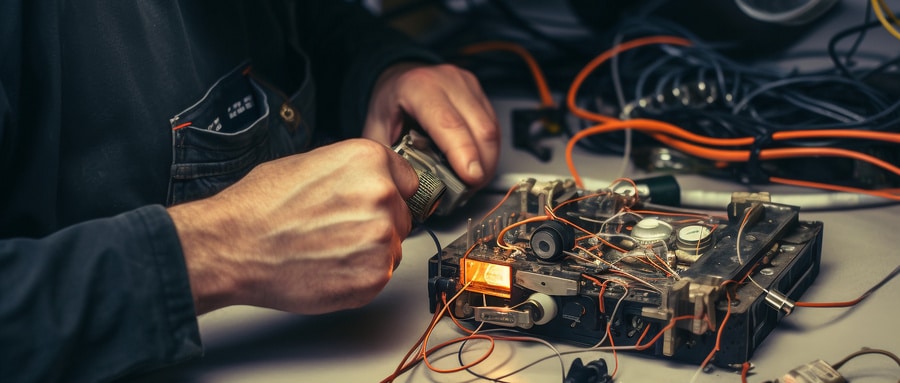Mastering HASL PCBs: A Comprehensive Guide to Hot Air Solder Leveling Technology
Recent advances in electronics manufacturing have given rise to ever-increasing demands for efficiency, compactness and cost-effectiveness in printed circuit board (PCB) production. Hot Air Solder Leveling (HASL), an established surface finishing technology is pivotal here; in this article we explore its technical landscape further and their role within electronics production.
Before we delve into HASL PCBs in detail, it is necessary to gain an understanding of their production process. PCB or printed circuit board production includes multiple stages such as etching, engraving photos, multilayer processing, drilling, masking, finishing and electrical testing.
At the conclusion of manufacturing, PCBs still must go through another stage called surface finishing to protect their copper surfaces from oxidation and degrade their solderability over time. Hot Air Solder Leveling (HASL) comes into play here to protect these assets against such degradation.
HASL has long been a fixture in the PCB industry. This process involves dipping PCBs in molten solder and then leveling them off using hot air knives, leaving an adhering layer that protects exposed copper traces against oxidation.
HASL PCBs’ popularity in the industry can be attributed to several advantages. Because it has been around for so long, it has proven itself as an economical and rapid assembly technique with excellent solderability that facilitates easier assembly and increased production yield. Furthermore, no special storage conditions are necessary making this method an attractive option for many manufacturers.
Even with these clear advantages, it’s essential to acknowledge any possible disadvantages of HASL. Not all fine pitch PCBs, surface mount technology (SMT), or flat pack applications are suitable for this process; additionally, although lead-free alternatives pose their own set of problems such as decreased solderability and higher processing temperatures.

While this article has examined the role, benefits, and drawbacks of HASL PCBs, ultimately the decision on the ideal surface finish method will ultimately depend on your project specifics such as cost, lead times, environmental concerns, component types etc.
Mastering the advantages, applications and limitations of Hot Air Solder Leveling (HASL) is of utmost importance for understanding its advantages, applications and limitations – not only does this knowledge enable you to select an effective surface finishing method but it can also optimize your PCB design, manufacturing and application processes.
No matter if it be for academic or professional needs, having an understanding of electronics technologies enables you to work more effectively within the electronics industry. Stay tuned with us and our articles in order to keep abreast of HASL PCB insights, trends and more!
Electronics offer an exciting world of technologies with endless potential. As an electronics professional or enthusiast, understanding these technologies, such as Hot Air Solder Leveling (HASL), will open doors for innovation and improvement in your field of choice – be it PCB assembly using Hot Air Solder Leveling or gadget design; mastering these elements will form you into an expert in your profession.
HASL PCB FAQ:
- Q: What is HASL PCB?
A: HASL, or Hot Air Solder Leveling, is a commonly used process in printed circuit board (PCB) manufacturing to provide a solderable surface finish to the PCB. - Q: How is the HASL process performed?
A: In the HASL process, the PCB is dipped in molten solder, and then hot air knives are used to blow off the excess solder and create a smooth finish. - Q: Why is HASL used?
A: HASL provides a dependable surface finish that offers good solderability for both wave and hand soldering. It also has a long shelf life and is relatively low cost. - Q: Are there any disadvantages to HASL?
A: HASL may cause uneven surfaces, especially on smaller or denser boards, and is also not lead-free, which poses environmental concerns. Moreover, the high temperature during the HASL process could potentially damage some boards. - Q: What is the difference between HASL and Lead-Free HASL?
A: The key difference between HASL and Lead-Free HASL is the composition of the solder. Lead-Free HASL uses a tin/copper alloy, while traditional HASL uses a lead-based solder. - Q: Is HASL suitable for all types of PCBs?
A: HASL can be used for a variety of PCBs but may not be suitable for boards with fine pitch components or boards that require a flat surface. - Q: How does HASL compare to other surface finishes like ENIG or Immersion Silver?
A: Each type of finish has its advantages and disadvantages. While HASL is cost-effective and reliable, ENIG (Electroless Nickel Immersion Gold) provides an exceptionally flat surface and is lead-free. Immersion Silver is also flat and ideal for high frequency applications, but is less robust in handling and storage. - Q: What should I consider when choosing between HASL and other finishes?
A: When selecting a finish, factors such as cost, application of the PCB, environmental considerations, and the required shelf-life should be taken into account. - Q: Can HASL be applied to flexible PCBs?
A: Yes, HASL can be applied to both rigid and flexible PCBs. - Q: Do PCB manufacturing companies offer HASL as a standard option?
A: Yes, many PCB manufacturers offer both HASL and Lead-Free HASL as part of their standard surface finish options.























